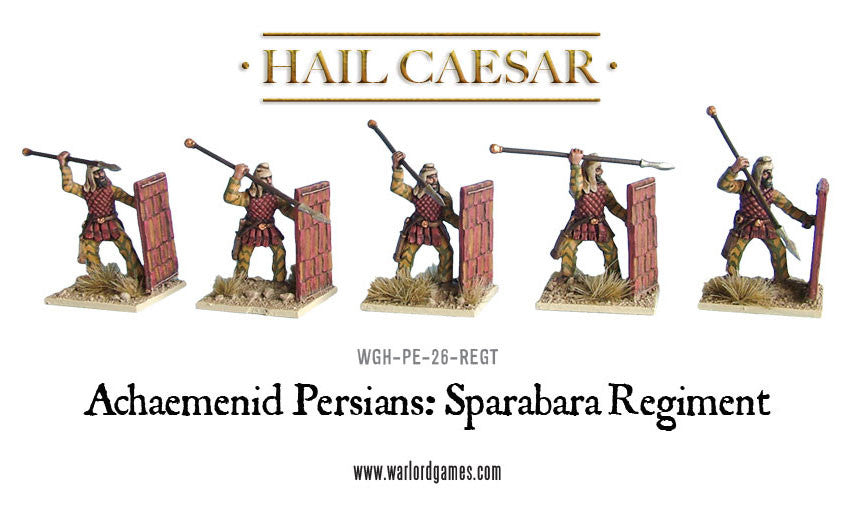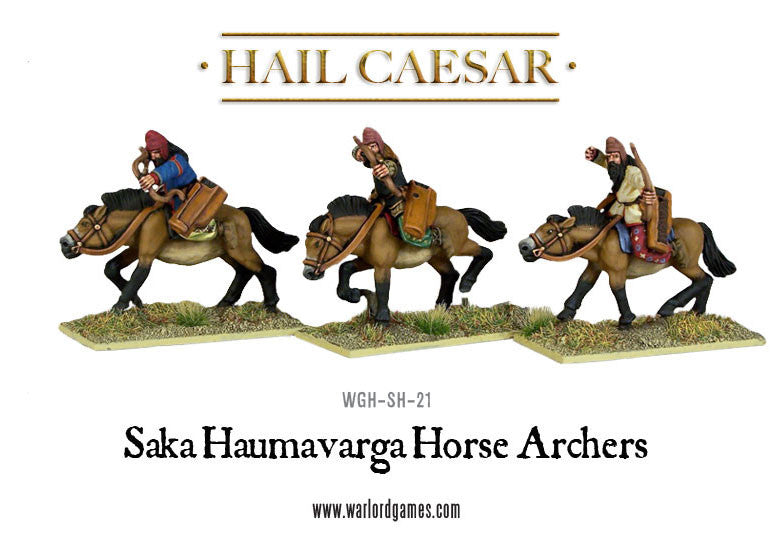Webstore: Persian Sparabara regiment

The sparabara regiment contains 20 metal miniatures – 17 spearmen and 3 command models, saving you £5.50 on buying them separately! Note: Models supplied unassembled and unpainted

The sparabara regiment contains 20 metal miniatures – 17 spearmen and 3 command models, saving you £5.50 on buying them separately! Note: Models supplied unassembled and unpainted

Arguably the most famous and feared troops in the Persian army, the Immortals were the best troops the Persian army could field and only ever took to the field when the King did. The musician bears the typical trumpet of the period. He has no shi

The command is equipped in the same manner as the Sparabari command, except that the leader wears a bronze 'Mesopotamian' style helmet as described by Herodotus. The horses tails are also tied at the ends is shown on some Achaemenid art. I

The Immortals were so called because if their number ever fell below 10,000 through ill health or death they were instantly replaced, Giving the impression that their numbers never diminished. The Immortals were the best the Persian army had to offer a

The commander of the heavy cavalry would have been very high ranking, perhaps even a member of the royal family. He carries a mace and golden akniakes., similar to ones found at Persepolis. The standard carries the kings royal symbol beaten into a shee

Saka was the name the Persians gave to all Scythian tribes. The Saka Haumavarga lived north west of Bactria, in modern day Uzbekistan. Although the Saka, and all of the steppe peoples usually fought on horseback Herodotus describes them as fightin

Arguably the most famous and feared troops in the Persian army, the Immortals were the best troops the Persian army could field and only ever took to the field when the King did. They wore the finest scale armour made in the Skythian style and we

These figures represent lower status warriors. They wear simple trousers and tunics and carry the akniakes dagger. Despite their status, they are formidable archers on foot or horseback. They ride the truly ancient Przewalski's horse, it

Persian nobility, azata, would have made up the ranks of the Persian cavalry. Contemporary depictions show cavalry wearing short sleeved cuirass with very high neck protectors, these were likely covered in iron or bronze scales. For added protection an

The Skythians were known to take heads and scalps as trophies, this has been confirmed by archaeological finds. Herodotus says these were hung from poles and from the bridles of their horses. The musicians bow case is also made from the skin of a